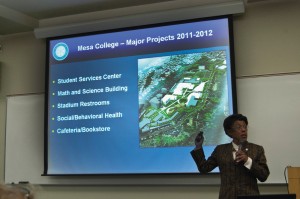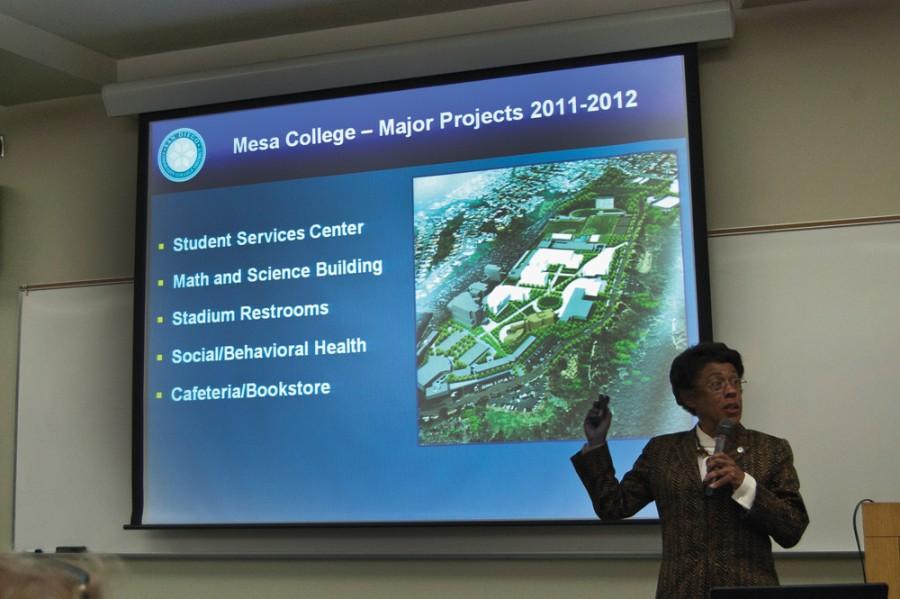The San Diego Community College District is California’s second-largest community college district. For the year 2011-2012 50,000 students enrolled in credit programs in City, Mesa, and Miramar Community Colleges.
On Sept. 12, Dr. Constance M. Carroll presented a speech that informed about the progress plans for the years 2011 and 2012.
During the presentation various key points were brought out that have a significant impact in our education. Some though, are not the most positive. There is an existing possibility of once again an increased fee in class courses and enrollment.
The numbers of student fees have changed dramatically since 1984. Classes used to be as cheap as $6 in the 1990’s. The enrollment fee of the 2011 summer semester was $26, an increase of $6 from the fall 2010 semester. For the Fall 2011 semester, the cost per unit increased to $36.As of now, plans of unit pricing will remain the same for the Spring 2012 semester.
This income though, is not kept by the community colleges. It goes back to State where it becomes part of the overall statewide budget.
One of the main reasons for the increased student fees are all the newly constructed buildings across campus. The completed projects are the Allied Health Education & Training Facility, Police Station, Design Center, and the All Weather Track and Field.
Regarding Mesa College, there are major projects for 2011-2012. These include: Student Services Center, Math and Science Building, Social and Behavioral Health, the cafeteria, and the bookstore.
Community Colleges are funded by the state, basing their decisions on enrollment by using Full-Time-Equivalent- Student, or FTES. For each FTES, the State compensates us at a rate of about $4,800. An FTES is has to be a block of 15 units.
For the past two years the State has decided to refuse to pay FTES earned by a community college district and has actually reduced the ceiling for this per community college district through a mechanism they call a “Workload Reduction.”
State, however, has placed a cap on how much schools can earn through FTES.
Although classes have been cut, community college districts are still doing everything possible to help students. This is why classes close up quickly; professors are allowing more students in classes even if it is over the enrollment limits set for the class.
It is suspected that once again for the following year there will still be unfunded FTES.
There will be two large impacts on students. The first will be fewer classes. There are at least 1,500 less classes District wide from the reductions that had to be made for summer and fall. Yet at the same time students are demanding classes. Thousands of students started the semester in waiting list and still couldn’t be accommodated.
The second impact will be financially. Classes have increased and chances are they will keep increasing. Students need to have the opportunity to plan their financial budgets ahead of time, not during the mid-year disruption. SDCCD is working hard to urge the legislature and governor that if the fee goes up again not to implement that mid-year but to delay it to summer or next fall.
“Students should be encouraged to follow these issues carefully, to be active, and especially to vote. All of these changes have come to us from the California legislature. These legislators are the students’ representatives, too, and they need to hear from students, especially at election time,” says Chancellor Dr. Carroll.
People need community college education that is good and affordable now more than ever. The path to more knowledge, transferring to universities, and job training starts here.


